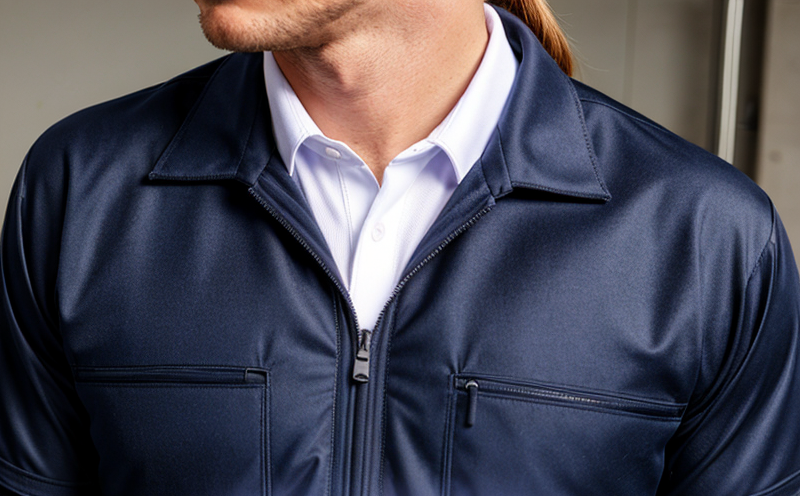Testing breathability for fabrics used in workwear and industrial applications
The Importance of Testing Breathability for Fabrics in Workwear and Industrial Applications Enhancing Safety, Performance, and Endurance
In the realm of workwear and industrial applications, fabrics play a crucial role in ensuring the safety, comfort, and productivity of workers. However, with an array of materials to choose from, manufacturers often face a daunting task in selecting fabrics that not only meet but exceed regulatory standards. This is where testing breathability for fabrics used in workwear and industrial applications comes into play a laboratory service provided by Eurolab that assesses the fabrics ability to regulate moisture transfer, prevent overheating, and maintain comfort levels.
What is Testing Breathability?
Breathability refers to a fabrics capacity to allow air and moisture to pass through its structure, regulating temperature and preventing the buildup of heat and humidity. In workwear and industrial applications, fabrics that possess high breathability properties are essential for maintaining worker comfort, reducing fatigue, and minimizing the risk of heat-related illnesses. By testing the breathability of fabrics, manufacturers can ensure their products meet the demands of various industries, including textiles, outdoor gear, and protective clothing.
Advantages of Testing Breathability for Fabrics in Workwear and Industrial Applications
The benefits of testing breathability for fabrics used in workwear and industrial applications are multifaceted
Enhanced Safety Fabrics with high breathability properties can help prevent heat-related illnesses, such as heat exhaustion and heat stroke, which can be life-threatening in extreme environments.
Improved Performance Breathable fabrics enable workers to perform optimally by maintaining a comfortable body temperature, reducing fatigue, and increasing productivity.
Extended Endurance By regulating moisture transfer, breathable fabrics extend the lifespan of workwear and industrial garments, reducing the need for frequent replacements and minimizing waste.
Compliance with Regulations Testing breathability ensures that fabrics meet or exceed regulatory standards, such as those set by OSHA (Occupational Safety and Health Administration) and EN 340 (European Standard for Protective Clothing).
Competitive Advantage Companies that prioritize breathability in their fabric selection can differentiate themselves from competitors, enhancing brand reputation and customer loyalty.
Cost Savings By selecting fabrics with high breathability properties, manufacturers can reduce costs associated with material replacement, worker compensation claims, and regulatory fines.
Benefits of Partnering with Eurolab for Testing Breathability
By collaborating with Eurolab for testing breathability, manufacturers can
Gain Accurate and Reliable Results Our laboratory is equipped with state-of-the-art equipment and experienced technicians to provide precise and reliable measurements.
Comprehensive Reporting We provide detailed reports that include test results, analysis, and recommendations for improvement, ensuring that clients have a clear understanding of their fabrics breathability properties.
Customized Solutions Eurolab offers tailored testing packages to meet the specific needs of each client, including on-site testing and specialized sampling procedures.
Expert Consultation Our team provides expert guidance and support throughout the testing process, helping clients navigate regulatory requirements and optimize their fabric selection.
QA Frequently Asked Questions about Testing Breathability for Fabrics in Workwear and Industrial Applications
Q What types of fabrics are typically tested for breathability?
A Eurolab tests a wide range of fabrics used in workwear and industrial applications, including cotton, polyester, nylon, and blends.
Q How do you determine the breathability of a fabric?
A We use specialized equipment, such as the Instron tensile testing machine, to measure the fabrics ability to regulate moisture transfer and prevent overheating.
Q What are the typical test methods used for breathability testing?
A Eurolab employs standard test methods, including ISO 5084 (Thermal resistance of materials) and EN ISO 6942 (Protective clothing Performance requirements).
Q Can I conduct breathability testing in-house or do I need to partner with a laboratory?
A While some manufacturers may have the necessary equipment and expertise for conducting breathability testing, partnering with Eurolab ensures accurate and reliable results, as well as compliance with regulatory standards.
Q How long does it take to receive test results and reports?
A Turnaround times vary depending on the complexity of the testing package; however, we typically provide results and comprehensive reports within 5-10 business days.
Conclusion
In conclusion, testing breathability for fabrics used in workwear and industrial applications is a critical step in ensuring worker safety, performance, and endurance. By partnering with Eurolab, manufacturers can benefit from our expertise, state-of-the-art equipment, and customized solutions to optimize their fabric selection and compliance with regulatory standards. Dont compromise on the quality and reliability of your products choose Eurolab for testing breathability and take a step towards enhancing safety, performance, and endurance in workwear and industrial applications.




